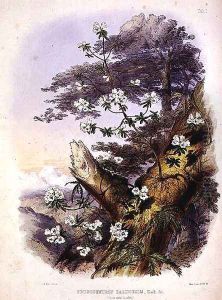Hooker, Joseph Dalton Paintings
Joseph Dalton Hooker was not primarily known as an artist, but rather as one of the preeminent British botanists and explorers of the 19th century. Born on June 30, 1817, in Halesworth, Suffolk, England, he was one of the greatest botanists and plant collectors of his age. His father, Sir William Jackson Hooker, was a notable botanist as well, which greatly influenced his career path. Joseph Dalton Hooker studied medicine at the University of Glasgow, where he also developed a deep interest in botany.
Hooker's contributions to botany were extensive and included significant botanical exploration. He joined Sir James Clark Ross's Antarctic expedition (1839-1843) as an assistant surgeon and botanist on the HMS Erebus, which gave him the opportunity to collect plant specimens from the Southern Ocean islands, Antarctica, and the southern tip of South America. Following this expedition, Hooker published 'Flora Antarctica' in 1844–1847, detailing his findings.
Over his lifetime, Hooker carried out numerous botanical expeditions to places such as India, the Middle East, Morocco, and the western United States. He became one of the closest friends of Charles Darwin, and his work on geographical distribution of plants was a crucial underpinning to Darwin's theories on evolution. In 1855, he published 'Flora of British India', which was a massive and comprehensive seven-volume work. In addition to his fieldwork and writings, Hooker succeeded his father as Director of the Royal Botanic Gardens, Kew, where he worked from 1865 to 1885. Under his leadership, Kew Gardens became a world-class center for botanical research and the cultivation of plants.
Hooker was awarded numerous honors for his work, including the Royal Medal of the Royal Society, the Copley Medal and the Darwin Medal. He was also knighted in 1877. Joseph Dalton Hooker passed away on December 10, 1911, at the age of 94. His legacy endures through his extensive contributions to botany and his influence on the scientific community of his time.
Although Hooker is not recognized as an artist in the traditional sense, his detailed botanical illustrations and writings have artistic merit, showcasing the beauty and diversity of plant life. His illustrations often accompanied his scientific descriptions, helping to visually communicate the characteristics of the plants he studied. These drawings are valuable not only to science but also to the history of botanical art.
